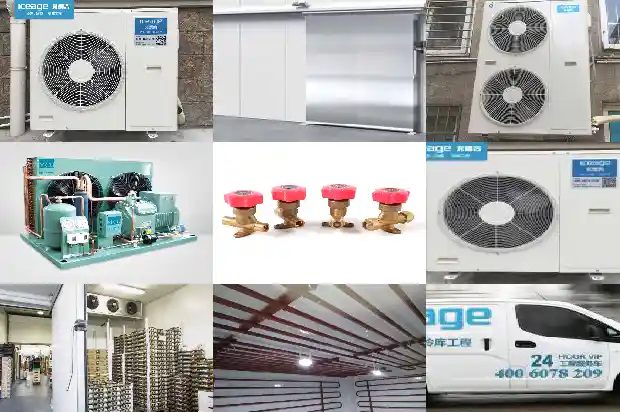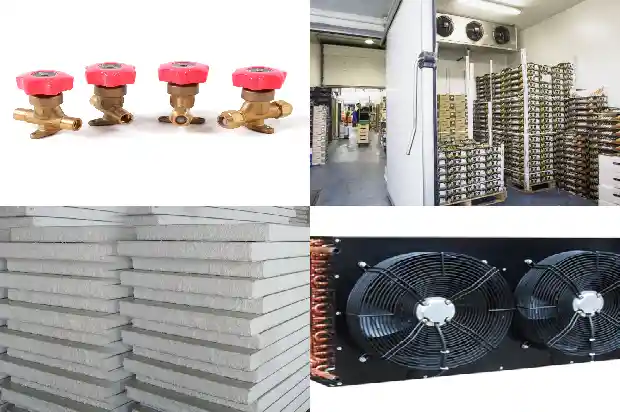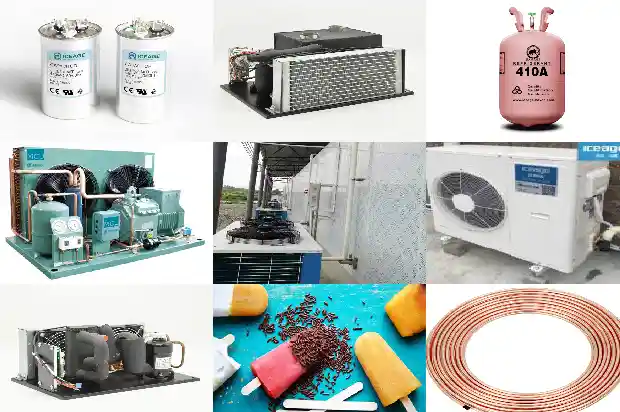The horsepower of an air conditioner originally refers to the input power, including that of the compressor
2025-03-11
The horsepower of an air conditioner originally referred to the input power, including that of the compressor, the fan motor, and the electrical control part. Due to the differences in the specific systems and electrical control designs of different brands, the output cooling capacity varies. Therefore, the cooling capacity is calculated based on the output power. Generally speaking, the cooling capacity of a 1-horsepower air conditioner is approximately 2,000 kcal.
Under normal circumstances, an air conditioner with a cooling capacity of 2,200-2,600W is called a 1-horsepower air conditioner, 3,200-3,600W is for a 1.5-horsepower air conditioner, and 4,500-5,500W is for a 2-horsepower air conditioner. When purchasing an air conditioner and referring to its horsepower, the horsepower refers to the power consumption of the appliance. 1 horsepower = 1 horsepower = 735W, and horsepower does not refer to the cooling capacity. When we usually say how many horsepower an air conditioner is, we estimate the cooling capacity of the air conditioner based on its power consumption. Generally speaking, it is customary to use 1 horsepower equal to a cooling capacity of 2,500W (that is, the 25 model), and 1.5 horsepower is approximately equal to a cooling capacity of 3,500W (that is, the 35 model).
The size of an air conditioner is not measured by "horsepower"
The national standard stipulates that the size of a room air conditioner is marked according to the cooling capacity parameter. For example, for an air conditioner with the model KFR-22GW, the number "22" indicates that the cooling capacity of this air conditioner is 2,200W, and it can be simply called the "22 model". However, many people don't call it this way now. Instead, they call it by how many "horsepower". In fact, calling it "horsepower" is completely wrong.
"Horsepower" is a unit of power. 1 horsepower = 735W (watt). In the past, in Japan, an air conditioner with an input power of 735W was orally called a 1-horsepower air conditioner, and an air conditioner with an input power of 1,470W was called a 2-horsepower air conditioner... However, since the input power of an air conditioner is not necessarily exactly a whole horsepower, for example, 1,400W or 1,600W are respectively called a small 2-horsepower and a large 2-horsepower air conditioner; an air conditioner between 1 horsepower and 2 horsepower is called a 1.5-horsepower air conditioner, and so on. In fact, this way of calling is very unscientific.
Firstly, the reflected data is not accurate, just a rough value; secondly, the input power cannot accurately reflect the actual cooling capacity of the air conditioner.
Due to the different qualities of air conditioners, their energy efficiency ratios are also different (the energy efficiency ratio is a parameter reflecting the cooling efficiency of the air conditioner, that is, the ratio of the actual cooling capacity to the input power. For example, for an air conditioner with a cooling capacity of 3,000W and an input power of 1,000W, the energy efficiency ratio is 3). Under the condition of the same input power, the cooling capacities are not the same.
The cooling capacity of an air conditioner is an important parameter reflecting the cooling ability of the air conditioner and is the basic basis for air conditioner selection. For household air conditioners, they are generally selected according to 120-150W of cooling capacity per square meter. If the room is exposed to the afternoon sun or has poor insulation and sealing, it can be appropriately increased, but generally it should not exceed 200W per square meter. For example, for a 20-square-meter bedroom that is not exposed to the afternoon sun and has good sealing and insulation, a 26 model (with a cooling capacity of 2,600W) is sufficient; if the sealing and insulation are slightly poor, a 30 model can be selected; if it is exposed to the afternoon sun and has poor sealing and insulation, models such as 32 and 35 can be selected. If we choose according to the input power "horsepower", we won't know how to make a choice.
It can be seen that the so-called "horsepower" cannot accurately reflect the cooling ability of the air conditioner. Only the cooling capacity parameter marked on the air conditioner model is accurate and scientific.
The Matching between the Room Area and the Horsepower of the Air Conditioner
1 horsepower = 750W. For household air conditioners, "horsepower" refers to the input power. When converted to the W representing the output power according to Chinese habits. 1 "horsepower" is equivalent to 2,200W--2,600W. So, using horsepower to measure is still too rough, and the so-called "large 1-horsepower" and "small 1-horsepower" statements appear. Generally, a "1-horsepower" refers to a cooling capacity of 2,300-2,500W.
The following helps you calculate the appropriate horsepower of the air conditioner for the living space, but it is for reference only. Especially for rooms with a relatively high ceiling, it is more appropriate to choose a slightly larger horsepower:
For a 10-square-meter room, a 1-horsepower air conditioner is suitable;
For a 15-square-meter room, a 1-horsepower to 1.5-horsepower air conditioner is suitable;
For a 20-square-meter room, a 1.5-horsepower air conditioner is suitable;
For a 30-square-meter room, a 2-horsepower to 2.5-horsepower air conditioner is suitable;
For a 40-square-meter room, a 2.5-horsepower to 3-horsepower air conditioner is suitable;
For a 50-square-meter room, a 3.5-horsepower to 4-horsepower air conditioner is suitable;
For a 70-square-meter room, a 5-horsepower to 6-horsepower air conditioner is suitable;
When the living space is relatively large, you can choose 2 air conditioners of 3 horsepower each, or 2 air conditioners of 5 horsepower each. At the same time, the ventilation degree of the home should also be considered. If there is a better sealing environment, you can consider choosing an air conditioner with a smaller horsepower. In addition, factors such as the voltage of the home should also be taken into account. It is best to consult a professional air conditioner technician.
The horsepower of an air conditioner actually means "input power". For example, a 1-horsepower air conditioner means an air conditioner with an input power of 1 horsepower (about 735W).
However, the COP of different air conditioners is different (that is, about 3 to 3.5 as mentioned by the experts above), that is, with the same input of 1 horsepower of electrical energy, the achievable cooling and heating capacities are different (about 1 horsepower × 3 to 1 horsepower × 3.5).
Therefore, when purchasing an air conditioner, don't simply ask "how many horsepower the machine is". Instead, you should care about the actual cooling and heating capacities in KW marked on the nameplate, because 1 horsepower of different brands or different models may represent different cooling and heating capacities.
The "horsepower" of an air conditioner is a term from Japan. The power of 1 horsepower is equal to 735W according to the national standard. Multiplying it by the thermal efficiency of the air conditioner, which is generally between 3 and 3.5, means that 1 horsepower of an air conditioner is 2,205W-2,572W, and 2 horsepower is approximately 5,000W. If it is greater than this, it is a large 2-horsepower air conditioner, and if it is less than this, it is a small 2-horsepower air conditioner. The Japanese believe that the efficiency of an air conditioner should be at least 3.2, and they calculate based on 3.2 as the base. The efficiencies of air conditioners of different manufacturers and even different models of the same manufacturer are also different. Therefore, neither the international standard nor China's national standard has the concept of "horsepower", and they all use the cooling capacity in watts (W) to represent it.

Under normal circumstances, an air conditioner with a cooling capacity of 2,200-2,600W is called a 1-horsepower air conditioner, 3,200-3,600W is for a 1.5-horsepower air conditioner, and 4,500-5,500W is for a 2-horsepower air conditioner. When purchasing an air conditioner and referring to its horsepower, the horsepower refers to the power consumption of the appliance. 1 horsepower = 1 horsepower = 735W, and horsepower does not refer to the cooling capacity. When we usually say how many horsepower an air conditioner is, we estimate the cooling capacity of the air conditioner based on its power consumption. Generally speaking, it is customary to use 1 horsepower equal to a cooling capacity of 2,500W (that is, the 25 model), and 1.5 horsepower is approximately equal to a cooling capacity of 3,500W (that is, the 35 model).

The size of an air conditioner is not measured by "horsepower"
The national standard stipulates that the size of a room air conditioner is marked according to the cooling capacity parameter. For example, for an air conditioner with the model KFR-22GW, the number "22" indicates that the cooling capacity of this air conditioner is 2,200W, and it can be simply called the "22 model". However, many people don't call it this way now. Instead, they call it by how many "horsepower". In fact, calling it "horsepower" is completely wrong.
"Horsepower" is a unit of power. 1 horsepower = 735W (watt). In the past, in Japan, an air conditioner with an input power of 735W was orally called a 1-horsepower air conditioner, and an air conditioner with an input power of 1,470W was called a 2-horsepower air conditioner... However, since the input power of an air conditioner is not necessarily exactly a whole horsepower, for example, 1,400W or 1,600W are respectively called a small 2-horsepower and a large 2-horsepower air conditioner; an air conditioner between 1 horsepower and 2 horsepower is called a 1.5-horsepower air conditioner, and so on. In fact, this way of calling is very unscientific.
Firstly, the reflected data is not accurate, just a rough value; secondly, the input power cannot accurately reflect the actual cooling capacity of the air conditioner.
Due to the different qualities of air conditioners, their energy efficiency ratios are also different (the energy efficiency ratio is a parameter reflecting the cooling efficiency of the air conditioner, that is, the ratio of the actual cooling capacity to the input power. For example, for an air conditioner with a cooling capacity of 3,000W and an input power of 1,000W, the energy efficiency ratio is 3). Under the condition of the same input power, the cooling capacities are not the same.

The cooling capacity of an air conditioner is an important parameter reflecting the cooling ability of the air conditioner and is the basic basis for air conditioner selection. For household air conditioners, they are generally selected according to 120-150W of cooling capacity per square meter. If the room is exposed to the afternoon sun or has poor insulation and sealing, it can be appropriately increased, but generally it should not exceed 200W per square meter. For example, for a 20-square-meter bedroom that is not exposed to the afternoon sun and has good sealing and insulation, a 26 model (with a cooling capacity of 2,600W) is sufficient; if the sealing and insulation are slightly poor, a 30 model can be selected; if it is exposed to the afternoon sun and has poor sealing and insulation, models such as 32 and 35 can be selected. If we choose according to the input power "horsepower", we won't know how to make a choice.
It can be seen that the so-called "horsepower" cannot accurately reflect the cooling ability of the air conditioner. Only the cooling capacity parameter marked on the air conditioner model is accurate and scientific.
The Matching between the Room Area and the Horsepower of the Air Conditioner
1 horsepower = 750W. For household air conditioners, "horsepower" refers to the input power. When converted to the W representing the output power according to Chinese habits. 1 "horsepower" is equivalent to 2,200W--2,600W. So, using horsepower to measure is still too rough, and the so-called "large 1-horsepower" and "small 1-horsepower" statements appear. Generally, a "1-horsepower" refers to a cooling capacity of 2,300-2,500W.

The following helps you calculate the appropriate horsepower of the air conditioner for the living space, but it is for reference only. Especially for rooms with a relatively high ceiling, it is more appropriate to choose a slightly larger horsepower:
For a 10-square-meter room, a 1-horsepower air conditioner is suitable;
For a 15-square-meter room, a 1-horsepower to 1.5-horsepower air conditioner is suitable;
For a 20-square-meter room, a 1.5-horsepower air conditioner is suitable;
For a 30-square-meter room, a 2-horsepower to 2.5-horsepower air conditioner is suitable;
For a 40-square-meter room, a 2.5-horsepower to 3-horsepower air conditioner is suitable;
For a 50-square-meter room, a 3.5-horsepower to 4-horsepower air conditioner is suitable;
For a 70-square-meter room, a 5-horsepower to 6-horsepower air conditioner is suitable;
When the living space is relatively large, you can choose 2 air conditioners of 3 horsepower each, or 2 air conditioners of 5 horsepower each. At the same time, the ventilation degree of the home should also be considered. If there is a better sealing environment, you can consider choosing an air conditioner with a smaller horsepower. In addition, factors such as the voltage of the home should also be taken into account. It is best to consult a professional air conditioner technician.
The horsepower of an air conditioner actually means "input power". For example, a 1-horsepower air conditioner means an air conditioner with an input power of 1 horsepower (about 735W).
However, the COP of different air conditioners is different (that is, about 3 to 3.5 as mentioned by the experts above), that is, with the same input of 1 horsepower of electrical energy, the achievable cooling and heating capacities are different (about 1 horsepower × 3 to 1 horsepower × 3.5).
Therefore, when purchasing an air conditioner, don't simply ask "how many horsepower the machine is". Instead, you should care about the actual cooling and heating capacities in KW marked on the nameplate, because 1 horsepower of different brands or different models may represent different cooling and heating capacities.
The "horsepower" of an air conditioner is a term from Japan. The power of 1 horsepower is equal to 735W according to the national standard. Multiplying it by the thermal efficiency of the air conditioner, which is generally between 3 and 3.5, means that 1 horsepower of an air conditioner is 2,205W-2,572W, and 2 horsepower is approximately 5,000W. If it is greater than this, it is a large 2-horsepower air conditioner, and if it is less than this, it is a small 2-horsepower air conditioner. The Japanese believe that the efficiency of an air conditioner should be at least 3.2, and they calculate based on 3.2 as the base. The efficiencies of air conditioners of different manufacturers and even different models of the same manufacturer are also different. Therefore, neither the international standard nor China's national standard has the concept of "horsepower", and they all use the cooling capacity in watts (W) to represent it.
Related Articles
- The Indoor Humidity Is Too High in Summer. How to Dehumidify? Can the Dehumidification Mode of the Air Conditioner Really Save Electricity and Money?
- Frosting in the Cold Storage? A Detailed Explanation of the 9 Reasons for Frosting of Air Coolers and 4 Defrosting Methods~~
- Why Does the Air Cooler Frost? What Are the Defrosting Methods?
- Noise Reduction and Vibration Damping in Refrigeration and Air Conditioning Systems
- Air-cooled, Water-cooled, Chilled Water, Dual Cooling Source and Free Cooling Precision Air Conditioners
- Installation and Welding of Precision Air Conditioning Systems
- Performance Comparison of Air-Cooled Heat Pumps, Multi-Split Systems and Water-Cooled Units
- Performance Comparison of Multi - connected Units, Air - cooled Modules and Water - cooled Screw Units
- The Influence of Temperature Changes on the Air Conditioning Refrigeration System
- Analysis of the Main Functions and Components of Refrigeration Air Conditioners
- Comparison Issues between Air-Cooled Screw Units and Air-Cooled Modular Units
- Analysis of the Working Process and Principle of Hot Fluoride Defrosting for Air Coolers
- Advantages and Disadvantages of Air-cooled Multi-connected Units and Analysis of Their Components
- Do You Have a Thorough Grasp of All 34 Components and Functions of the Air-Cooled Multi-Split System?
- Which is Better, Air Cooler or Aluminum Pipe Row? How to Choose?
- What Causes the Indoor Unit of an Air - conditioner to Freeze? Here's the Answer~
- Comprehensive Introduction to Chilled Water Systems of Large - scale Central Air - conditioners
- Refrigeration Repair Techniques: A Must - Know - "Sub - cooling" and "Super - heating"
